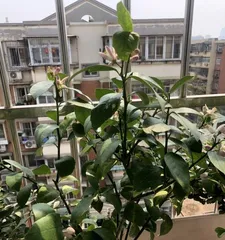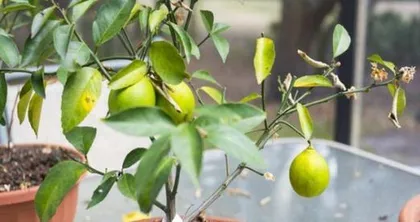The lemon tree is one of the favorite fruit trees for many people. It not only brings us delicious fruits but also has great ornamental value. However, for a lemon tree to grow healthily and well, daily watering and fertilizing are far from enough. This article will introduce everyone to how to properly care for lemon trees.

I. The Best Time to Care for Lemon Trees
If you are a beginner in growing lemon trees, you need to know that the best growing period for lemon trees is in spring and summer. This period is characterized by abundant sunlight, suitable temperatures, and plentiful rainfall. During this time, lemon trees grow relatively fast with lush foliage.
II. Choosing the Right Soil
The growth of lemon trees requires a suitable soil environment. Generally, the soil must have good breathability and drainage. At the same time, it should also have a certain fertility to supply the nutrients needed for the lemon tree's growth. If the soil is not suitable, it will affect the growth and development of the lemon tree, leading to its withering and death.

III. Watering Methods for Lemon Trees
Lemon trees need an appropriate amount of water to grow, but too much or too little watering can harm them. Watering should be even and sufficient, and you should avoid waterlogging, which can cause the roots to rot.
IV. Notes on Fertilization
Lemon trees need a supplementary supply of nutrients during their growth process, so fertilization is very important. However, when fertilizing, it is also important to control the amount of fertilizer to avoid over-fertilization. At the same time, you should choose the right type of fertilizer to meet the needs of the lemon tree's growth.
V. Pruning Techniques for Lemon Trees
Regular pruning can help the lemon tree maintain a good shape and healthy condition. During the pruning process, you need to master some techniques, such as using suitable pruning shears and regularly cleaning branches and leaves. Do not over-prune, as it may affect the growth and development of the lemon tree.

VI. Preventing Lemon Trees from Pests and Diseases
Lemon trees are susceptible to pests and diseases, so timely preventive and control measures must be taken. During the prevention and control process, you can choose some non-toxic and environmentally friendly methods, such as using organic fertilizers and spraying biological pesticides.
VII. Protecting Lemon Trees from Severe Cold
Lemon trees are plants that prefer warm environments and are not cold-tolerant. Before the cold season arrives, some protective measures should be taken, such as covering the trunk with insulation material.
VIII. Removing Flowers from Lemon Trees
The flowers on a lemon tree consume a lot of nutrients and energy, but they do not contribute much to the growth of the fruit. In the early stages of a lemon tree's growth, the flowers should be removed so that it can better use its energy and nutrients to promote fruit growth.
IX. Disease Prevention for Lemon Trees
During the growth process, lemon trees can encounter various diseases, such as brown spot disease and Huanglongbing (Citrus Greening). During the prevention and control process, diseases should be discovered and treated promptly to avoid harming the lemon tree.
X. Irrigation Techniques for Lemon Trees
Irrigation is key to the growth of lemon trees, so it's important to master some techniques, such as increasing the amount of irrigation in summer and avoiding drought. Also, pay attention to water quality to avoid causing harm to the lemon tree.
XI. Sunlight Requirements for Lemon Trees
Lemon trees are sun-loving plants and require plenty of sunlight during their growth process. If they are in a dark environment for a long time, it will affect their growth and development, and may even lead to death.
XII. Climate Adaptability of Lemon Trees
Lemon trees have strong adaptability, but they are also easily damaged in extreme temperature environments. In summer, pay attention to shading, and in winter, take insulation measures to protect the growth of the lemon tree.
XIII. Harvesting Time for Lemon Fruits
The harvesting time for lemons should be determined by their maturity. Generally, they should be picked when the fruit turns yellow and has a glossy appearance. If picked prematurely, it may affect the quality and taste of the fruit.
XIV. Propagation Methods for Lemon Trees
Lemon trees can be propagated by methods such as cuttings and grafting, but some techniques also need to be paid attention to during the process, such as choosing the right time for cuttings and the specific steps for cuttings and grafting.
XV. Precautions for Lemon Trees
During the process of caring for lemon trees, there are other precautions to take, such as avoiding manual damage and insufficient sunlight. Only by mastering these techniques and precautions can lemon trees grow better.
For those who love lemon trees, to make them grow well, it is necessary to master some care techniques and precautions. Only by doing a good job in aspects such as the right timing, choosing the right soil, watering an appropriate amount of water, proper fertilization, and regular pruning, can lemon trees grow healthier and faster.